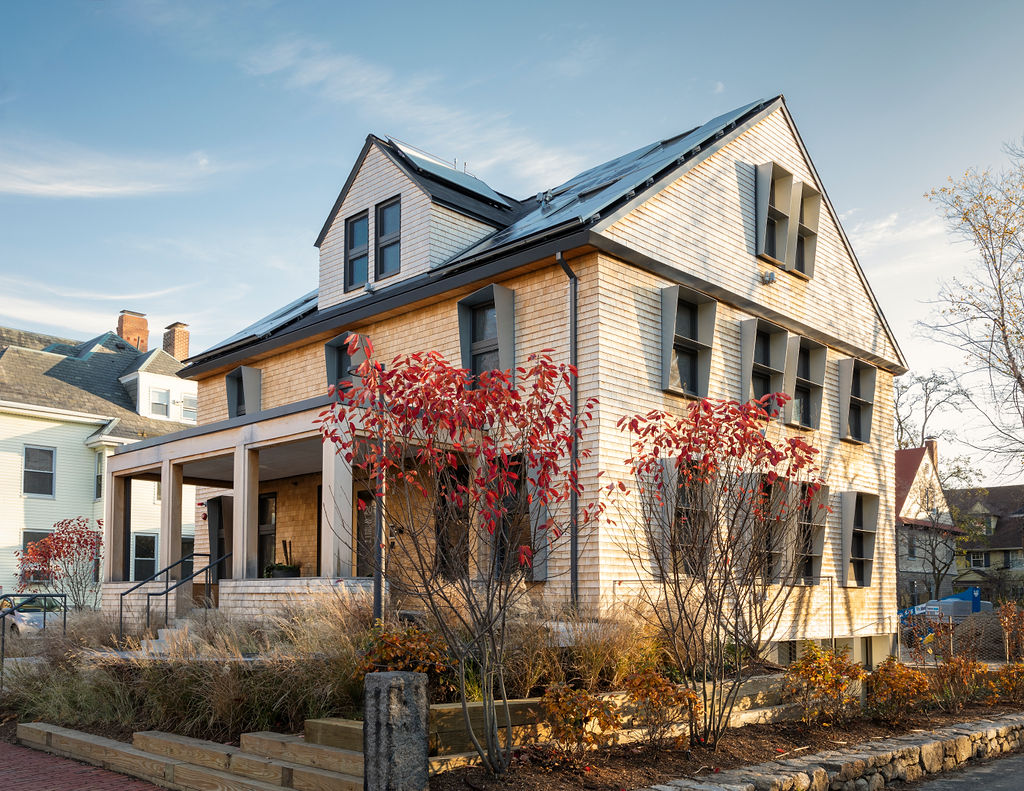The Harvard Center for Green Buildings and Cities (CGBC) at the Harvard Graduate School of Design has completed an ambitious effort to retrofit a 1924 home in Cambridge, Mass., into a living laboratory that will serve as the organization’s headquarters. Dubbed HouseZero, the energy-positive prototype for ultra-efficient architecture attempts to demonstrate how existing structures can be modified to consume less energy.
Designed by Norwegian architectural firm Snøhetta in collaboration with engineer Skanska Teknikk Norway, HouseZero’s concepts are driven by radical performance goals, including using nearly zero energy for heating and cooling and zero electric lighting during daytime, operating with 100% natural ventilation, and producing zero carbon emissions. Over its lifetime, the structure is intended to produce more energy than was used to renovate and operate it.
The CGBC will also leverage HouseZero as a research tool, drawing data from hundreds of sensors embedded within each component of the home that monitor its performance. In turn, the data will help the CGBC develop new systems and data-driven learning algorithms that promote energy efficiency, health, and sustainability.
The building is designed to continuously adjust itself to reach thermal comfort for its occupants. It combines innovative technologies such as software and sensor arrays with more traditional solutions, including solar vents, concrete slabs that store thermal energy, and natural ventilation. Rather than tightly sealing the building, the envelope and materials that make up HouseZero were designed to interact with the seasons and the exterior environment naturally. —Leah Ghazarian
This story originally appeared in ProSales sister brand BUILDER.



